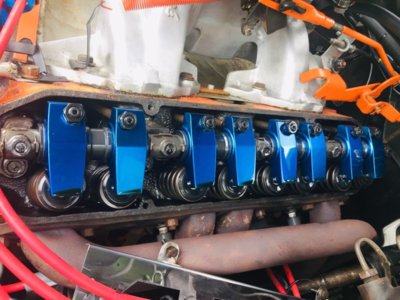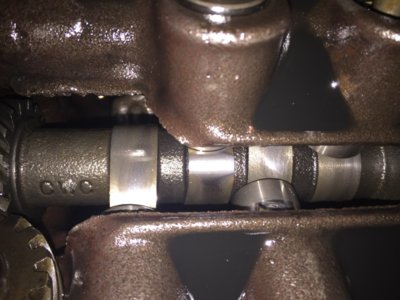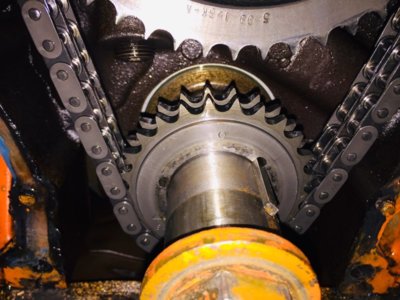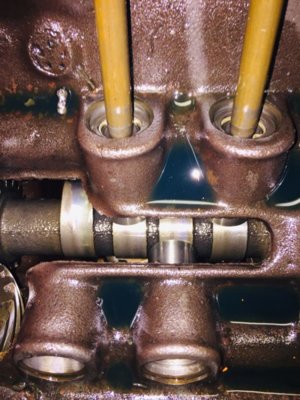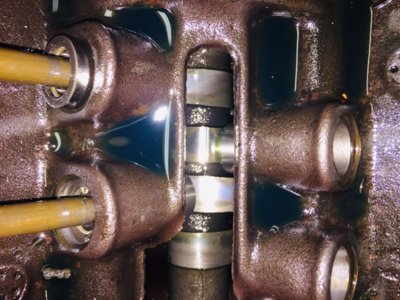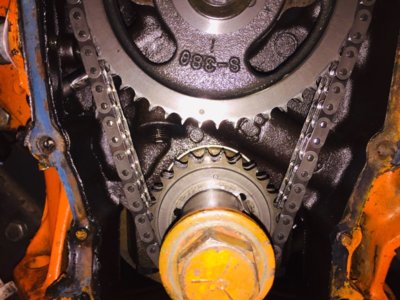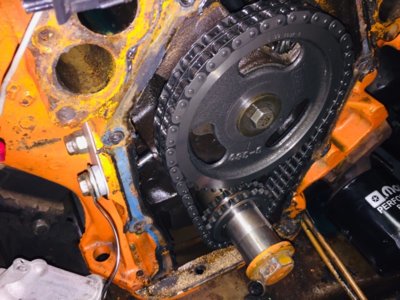Thank you for commenting Aj/FormS,
OK, here goes..i own this car for 3 years and have been driving it since.
Actually now is the first time i focused that deep on the engine, this is because i will pull the engine soon to do various jobs.
I still wanted to do a paint job in the engine bay, get the engine painted as well and do some repairs on the bolt holes for the exhaust.
But since i found 1 header is cracked i realized i better do it now because of a potential fire hazard it would not be smart to keep driving it in this state.
Therefore, with the engine out it would be easy to change camshaft if i have to to reach my type of driving style i am looking for and with in the back of the head to change the 4.10 ratio rear to a 3.55.
Define "runs rough"
Since i own the car the engine "stumbles" at idle and actually shakes quite excessive.
It is not able to run a smooth set rpm, sounds like every now and then there is a random cylinder not firing. Let it idle at 1000+ rpm and it will be better.
It has been like that no matter what, different timing settings tested from 10 deg initial to 25+deg, with and without vacuum, ported and manifold but no difference.
Having the vacuum can attached causes detonation at some point, being under load or when at very light throttle so i left the vacuum advance off.
When i installed an AFR meter i found it was cruising with an AFR of 10-10.5, plugs were black and greasy.
It is not the excessive fuel consumption that i worry, it is just the fact it simply does not run as it should for on the street.
I can do pulls all day long, mid, high throttle or WOT and it will burn my tires clean off, but idling normal or have a good AFR during cruising is not happening.
There is no such thing as hesitation or any other carb/fuel related issue, if you hit it just make sure you have a clear road and have 2 hands at the steering wheel.
This thing must have been raced at the strip, which is not my idea to drive the car and i am aiming for a street style performance car with a decent idle.
I know, i want a different car than i currently own, but finding a medium would do me already, just to get the nervous edge off.
I had replaced the old Holley 750 4bbl with mech secondary's for a street avenger 770 with choke and vacuum secondary.
Took some time playing with jetting but the last times i drove it i am having nice AFR readings all over.
The street avenger has only 2 corner idling but i can manage, i get the same vacuum readings as with the old carb.
I am quite new in this Mopar stuff and i will probably have some settings not 100%, but i cannot believe there is something i did so wrong causing this poor idle as i have tried so many things in different ways that at some point i must have found the right combination already if there was one.
The converter stall speed is unknown, i do have a 4.10 ratio rear axle with SG and part of my plan was to change this to a 3.55 run a little lower on rpm at cruise (50mph).
Here all settings and specifics for the engine:
906 head (no idea on valve size)
Adjustable rockers with 1.6 ratio
Edelbrock performer RPM dual plane intake
Holley 770 Street avenger, vac secondary's
1-7/8" headers (to be replaced with new ones, same size)
MSD RTR distributor with an MSD Blaster SS coil, Timing set at 18deg intial and 18deg mech advance, 36deg all-in @ 2500rpm. (checked all spark plug cable for resistance and are good)
Fuel i am using is octane 94-95 i guess, advertised as 98 but probably lower.
Camshaft i found the initials CWC, which is the cast manufacturer, they don't do the grind.
Compression test results:
#1: 200 #2: 200
#3: 195 #4: 205
#5: 200 #6: 198
#7: 197 #8: 203
I might have overdone it with 5-8 cranking strokes, warm engine, carb at WOT.
The gauge is a new kit i purchased for that purpose...for sure not a calibrated gauge but i guess it should not be far of the truth.
Regarding the way i set up my dial gauge, the tip of the dial gauge was centered by the oil hole in the center of the cup and could not move around.
I just made sure it lined up straight without forcing it in position.
The readings were consistent, just eye balling the degree wheel could have caused the slight error.
2x correcting for 0.5deg is already 1 degree

My timing curve, with black advance bushing @ 18deg.
